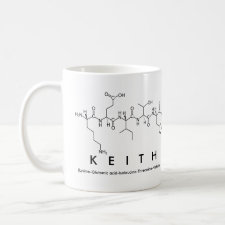
Authors: Lavignac N, Brain KR, Allender CJ
Article Title: Concentration dependent atrazine-atrazine complex formation promotes selectivity in atrazine imprinted polymers.
Publication date: 2006
Journal: Biosensors and Bioelectronics
Volume: 22
Issue: (1)
Page numbers: 138-144.
DOI: 10.1016/j.bios.2006.03.017
Alternative URL: http://www.sciencedirect.com/science/article/B6TFC-4JXPS4S-1/2/44b9d719dc3dfed572ddc972a928ab95
Abstract: An atrazine (ATR) molecularly imprinted polymer (MIP) was prepared using a non-covalent strategy. The affinity and selectivity of the polymer was initially evaluated under non-equilibrium conditions and the polymer was shown to possess good template selectivity. The selectivity of the polymer was further investigated under equilibrium conditions and over a range of concentrations using Scatchard plots and Hill plots and by assessing distribution coefficients and normalised selectivity values. It was observed that both selectivity and affinity were dependent on the concentration of the ligand and that unusually selectivity and affinity were better at higher atrazine concentrations. It was concluded that this phenomenon resulted from the formation of atrazine-atrazine complexes during the pre-polymerisation stage and during rebinding and that the polymer demonstrated improved atrazine affinity when the conditions favoured complex formation
Template and target information: atrazine
Author keywords: molecularly imprinted polymer, atrazine, Cooperative interaction, Hill plot



Join the Society for Molecular Imprinting

New items RSS feed
Sign-up for e-mail updates:
Choose between receiving an occasional newsletter or more frequent e-mail alerts.
Click here to go to the sign-up page.
Is your name elemental or peptidic? Enter your name and find out by clicking either of the buttons below!
Other products you may like:
 MIPdatabase
MIPdatabase









